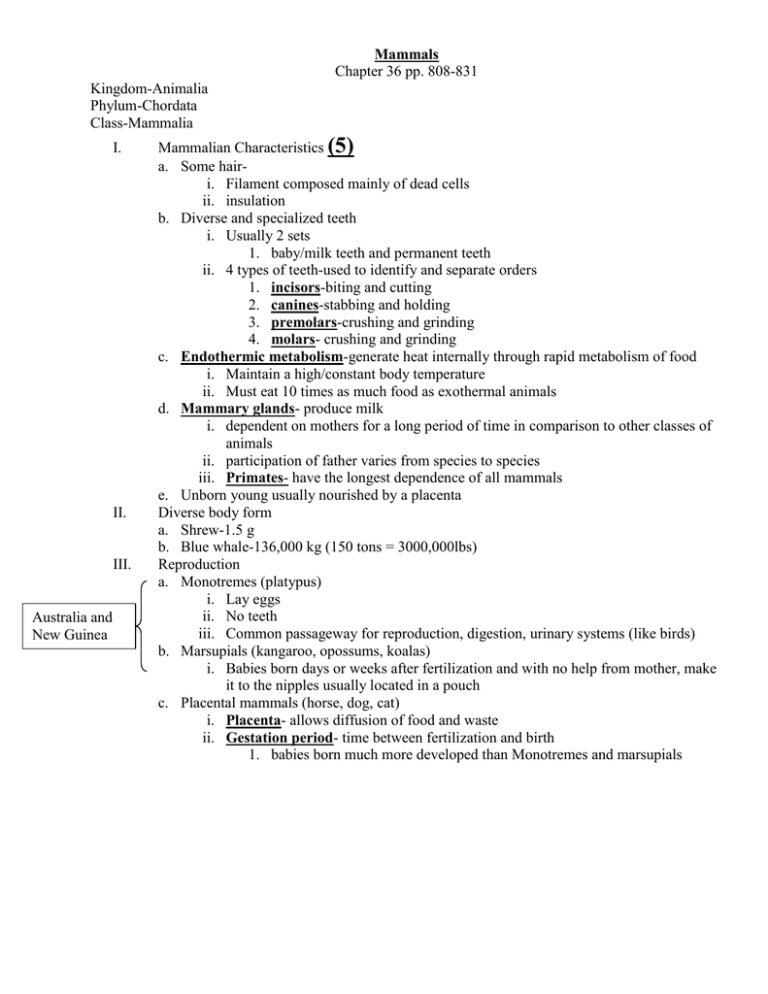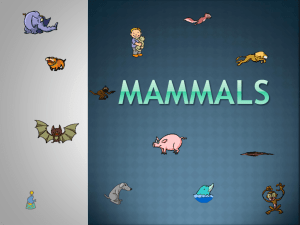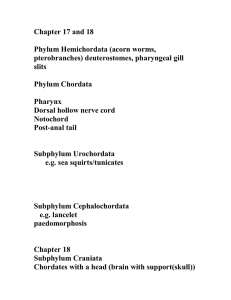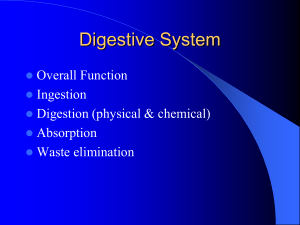(5)
advertisement

Mammals Chapter 36 pp. 808-831 Kingdom-Animalia Phylum-Chordata Class-Mammalia I. II. III. Australia and New Guinea Mammalian Characteristics (5) a. Some hairi. Filament composed mainly of dead cells ii. insulation b. Diverse and specialized teeth i. Usually 2 sets 1. baby/milk teeth and permanent teeth ii. 4 types of teeth-used to identify and separate orders 1. incisors-biting and cutting 2. canines-stabbing and holding 3. premolars-crushing and grinding 4. molars- crushing and grinding c. Endothermic metabolism-generate heat internally through rapid metabolism of food i. Maintain a high/constant body temperature ii. Must eat 10 times as much food as exothermal animals d. Mammary glands- produce milk i. dependent on mothers for a long period of time in comparison to other classes of animals ii. participation of father varies from species to species iii. Primates- have the longest dependence of all mammals e. Unborn young usually nourished by a placenta Diverse body form a. Shrew-1.5 g b. Blue whale-136,000 kg (150 tons = 3000,000lbs) Reproduction a. Monotremes (platypus) i. Lay eggs ii. No teeth iii. Common passageway for reproduction, digestion, urinary systems (like birds) b. Marsupials (kangaroo, opossums, koalas) i. Babies born days or weeks after fertilization and with no help from mother, make it to the nipples usually located in a pouch c. Placental mammals (horse, dog, cat) i. Placenta- allows diffusion of food and waste ii. Gestation period- time between fertilization and birth 1. babies born much more developed than Monotremes and marsupials











